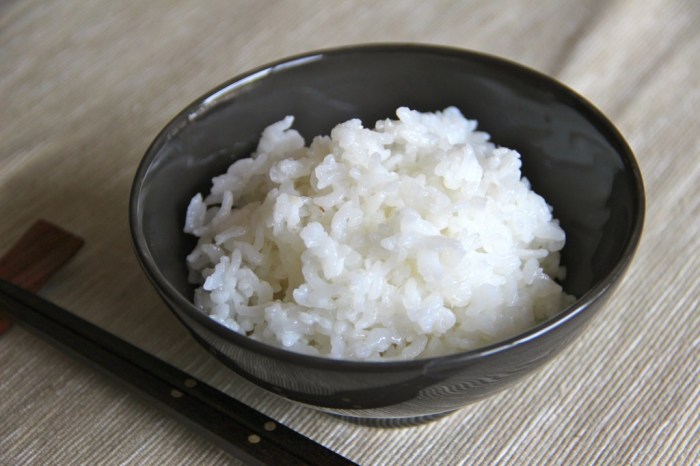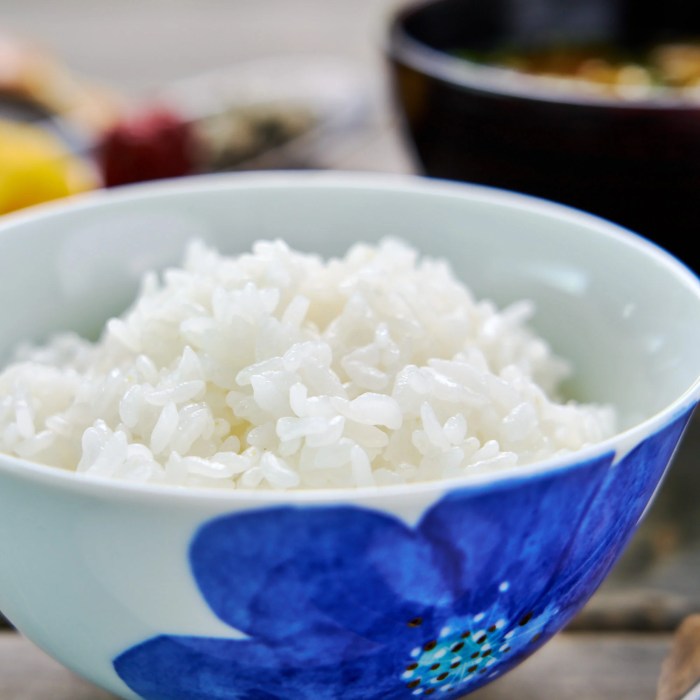Tips for Cooking Perfect Japanese Rice

How to cook rice in japanese style – When it comes to cooking rice in Japanese style, there are a few key tips to keep in mind. First and foremost, it’s important to use the right type of rice. Japanese short-grain rice, also known as Japonica rice, is the best choice for traditional Japanese dishes. This type of rice is stickier and more glutinous than long-grain varieties, making it perfect for sushi, rice balls, and other Japanese dishes.
What Do You Mean by Japanese Style Rice?
Japanese style rice refers to the specific methods and techniques used in Japan to cook and prepare rice. This includes using the right type of rice, washing and rinsing the rice properly, and cooking it in a traditional Japanese rice cooker. The end result is perfectly cooked, fluffy rice that is the perfect base for a variety of Japanese dishes.
What is Known About Cooking Rice in Japanese Style?: How To Cook Rice In Japanese Style
Cooking rice in Japanese style is a precise art that has been perfected over centuries in Japan. The key to perfect Japanese rice lies in the proper washing and rinsing of the rice grains before cooking. This helps to remove excess starch and impurities, resulting in fluffy, perfectly cooked rice every time.
Solution for Cooking Japanese Rice
To cook Japanese rice at home, you will need a few key ingredients and tools. First and foremost, you will need Japanese short-grain rice, water, and a traditional Japanese rice cooker. Additionally, you may want to have a rice paddle for fluffing and serving the rice, as well as a wooden hangiri bowl for mixing in seasoning for sushi rice.
Detailed Information on Cooking Japanese Rice

Start by measuring out the desired amount of rice and placing it in a fine-mesh colander. Rinse the rice under cold water, gently rubbing the grains between your fingers to remove excess starch. Continue rinsing until the water runs clear, then drain the rice well.
Next, transfer the rinsed rice to the inner pot of your rice cooker and add the appropriate amount of water. The water-to-rice ratio may vary depending on the brand of rice cooker and the type of rice being used, so be sure to follow the manufacturer’s instructions for best results.
Once the rice and water are in the pot, close the lid and select the appropriate setting on your rice cooker. Allow the rice to cook according to the cooker’s instructions, then let it rest for a few minutes before fluffing with a rice paddle and serving.
Describe in Depth the Process of Cooking Japanese Rice
The process of cooking Japanese rice begins with selecting the right type of rice. Japanese short-grain rice, or Japonica rice, is the preferred choice for traditional Japanese dishes due to its sticky and glutinous texture.
After measuring out the desired amount of rice, it’s important to rinse the grains well under cold water to remove excess starch. This helps to prevent the rice from becoming too sticky or clumpy when cooked.
Once the rice is rinsed, transfer it to the inner pot of your rice cooker and add the appropriate amount of water. The water-to-rice ratio will vary depending on the type of rice being used, so be sure to consult the manufacturer’s instructions for best results.
After cooking, allow the rice to rest for a few minutes before fluffing with a rice paddle. This helps to separate the grains and create a light, fluffy texture that is perfect for serving with a variety of Japanese dishes.
Conclusion
In conclusion, cooking rice in Japanese style is a precise art that requires attention to detail and the use of the right ingredients and tools. By following the proper steps and techniques, you can enjoy perfectly cooked Japanese rice that is the perfect base for a variety of traditional dishes.
FAQs
1. What type of rice is best for cooking Japanese style rice?
Japanese short-grain rice, also known as Japonica rice, is the best choice for traditional Japanese dishes.
Decorating a bedroom with an off-center window can be a unique challenge, but it also offers an opportunity to get creative with your design. Consider using asymmetrical elements such as curtains or artwork to balance the space. To learn more about how to decorate a bedroom with an off-center window, check out this helpful guide: how to decorate bedroom with off center window.
2. How important is rinsing the rice before cooking?
Rinsing the rice helps to remove excess starch and impurities, resulting in fluffy, perfectly cooked rice.
Decorating a bedroom with an off-center window can be a creative challenge, but it also offers unique opportunities to showcase your style and personality. By utilizing clever design tricks and strategic placement of furniture, you can create a balanced and visually appealing space. Check out this helpful guide on how to decorate a bedroom with an off-center window for inspiration and practical tips.
3. Do I need a rice cooker to cook Japanese rice?
While a rice cooker is the most convenient tool for cooking Japanese rice, you can also cook it on the stove using a heavy-bottomed pot.
4. Can I use long-grain rice for Japanese dishes?
While long-grain rice can be used in a pinch, it will not yield the same results as Japanese short-grain rice.
5. How can I season Japanese rice for sushi?
To season Japanese rice for sushi, mix in a combination of rice vinegar, sugar, and salt while the rice is still warm.
 Interior Living
Interior Living
